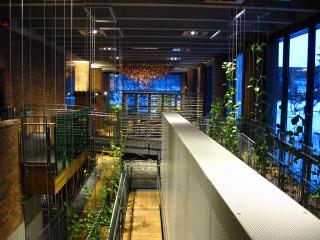
[Update: 22 January 2009] Some of the information in the post below is inaccurate. Namely, it implies that some level of continuous emissions is compatible with climate stabilization. In fact, stabilizing climate required humanity to have zero net emissions in the long term. For more about this, see this post.
On this blog, I have frequently cited a figure of about 750kg of carbon dioxide per person per year as sustainable. This is just what you get when you divide the approximate level of sustainable emissions (about 5,000 megatonnes) by the number of people alive on Earth. If each person emitted that much, the net radiative forcing effect of anthropogenic emissions would be approximately zero. That means the sum of the concentrations of all greenhouse gasses, multiplied by their global warming potential, would be in balance with the capacity of the planet to absorb those gasses.
Of course, suddenly achieving the transition to 750kg each would be extremely painful. Thankfully, achieving it instantly is not necessary. Right now, the atmospheric concentration of carbon dioxide (the most important greenhouse gas) is about 383 ppm. That compares with 280 ppm at the time of the Industrial Revolution. Scientists disagree about how much that concentration can rise before extremely harmful effects start to manifest themselves. The highest number generally suggested by reasonable people is 550 ppm, a more mainstream figure is 450 ppm, and some people even argue that we have already emitted enough that very harmful effects are inevitable, once lags in the climate system are overcome. At present, unsustainable global emissions are increasing the global concentration of carbon dioxide by about 2 ppm a year.
Acknowledging the uncertainty, let’s take 450 ppm as a best guess. That means we have about 67 ppm of shoulder room left. It is vital to note that this isn’t shoulder room for total emissions to rise; in the long run, they absolutely must fall dramatically. It is shoulder room in which we can keep emitting above unsustainable levels without wrecking the planet. The situation is akin to being in a lifeboat in a hot, dry climate with a barrel of water and a solar still that produces a small amount of water per day. The 750kg each is the output from the still. The 67 ppm is approximately how much we have left in the barrel. The question now becomes how to divide it. Here are some possibilities:
- Continued unsustainable emissions in the developed world
- Continued and increasing unsustainable emissions in the developing world
- Additional security against abrupt or runaway change
We also have a choice about how to divide the use of barrel water across time. We might decide to drink lots of it in the early days, leaving less for later on. We might decide to save as much as we can. Of course, our capacity to do the latter is somewhat limited by the tragedy of the commons. It’s like there are a whole bunch of strangers in the lifeboat and any one can drink from the barrel without the others being able to stop them. You might end up with everyone trying to grab all they can early, even if saving most of the water for later would produce the best outcome for everyone.
Will we be able to find a way to moderate how much each person takes from the barrel? How much should we be willing to suffer in able to conserve some water for the future, or as a hedge against the possibility that 450 ppm is actually too high? These are among the toughest and most pressing questions in global climate change policymaking.







